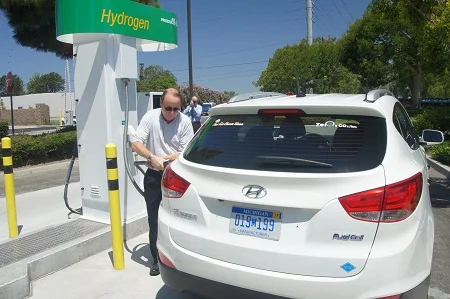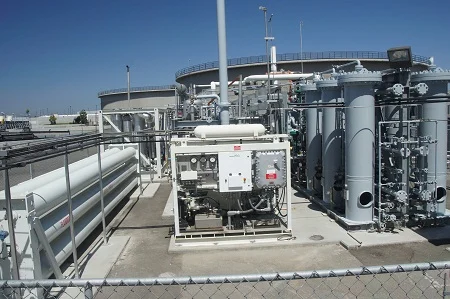Southern California drivers who are on the transportation cutting edge – tooling around in hydrogen fuel cell-powered vehicles – will soon have a new option for filling up.
The Orange County sewage treatment plant. Yes, seriously.

The Fountain Valley plant is now using the methane generated in treating wastewater as the fuel in a fuel cell.
Most of the hydrogen produced is then being used to make electricity to power the plant – but some of it is going to a fueling station that will be open to the public and can be used to fill up between 25 and 50 fuel-cell electric vehicles every day, according to the U.S. Department of Energy (DOE).
Allentown, Penn.-based Air Products was the contractor on the fueling station and Danbury, Conn.-based FuelCell Energy made the Direct FuelCell system that is at the center of this operation, which the DOE called “the world’s first tri-generation fuel cell and hydrogen energy station to provide transportation fuel to the public and electric power to an industrial facility.”
Here’s how it works: methane gas produced at the wastewater plant is purified and pumped into a fuel cell, where it is reformed into hydrogen. The fuel cell produces clean electricity for use at the treatment plant. Excess hydrogen leaves the unit, and is purified to vehicle-grade hydrogen at the fueling station.

According to FuelCell Energy, “The power plant is generating 250 kilowatts of ultra-clean power, enough to power about 200 average size homes.”
The DOE said the system being demonstrated in Orange County “could offer a pathway to low-cost hydrogen and also demonstrates the versatility of fuel cells to utilize multiple feedstocks, such as biogas and natural gas, to produce power and renewable hydrogen that can be used to fuel light duty vehicles such as forklifts or as backup power in applications such as cell phone towers.”






